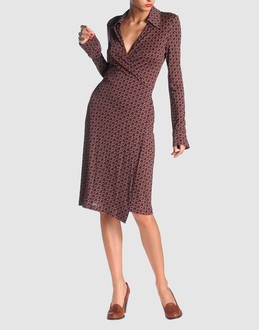Tuesday 12 February 2008
Thoughtful Dresser poll - fashion forward
Posted by
Linda Grant
at
16:44
1 comments
![]()
![]()
![]()
![]()
Poll: Skirt lengths

Just below the knee the clear winner, there's a surprise.
Of course it's the most flattering length, it cuts the leg at its narrowest point, just before the curve of the calf. It elongates the leg and torso and hides bad knees.
Posted by
Linda Grant
at
15:22
5
comments
![]()
![]()
![]()
![]()
Labels: Democracy, Elements of style
Nuclear winter
 Marios Schwab at London Fashion Week. A similar theme was at Jaeger. Why? But maybe we'll see a watered down version at M&S come October.
Marios Schwab at London Fashion Week. A similar theme was at Jaeger. Why? But maybe we'll see a watered down version at M&S come October.
Posted by
Linda Grant
at
15:18
2
comments
![]()
![]()
![]()
![]()
Labels: AW08
Why your clothes don't fit
I once, very briefly, studied Sociology. I recall sitting in a library reading a study which triumphantly concluded that people of different incomes lived in different parts of cities. I put the book down and thought. Money. Old Rope.
And now a landmark study by scientists! in Spain has reveals that many women can't find clothes that fit properly.
Scientists have confirmed what millions of women know already: the fashion industry does not make clothes to fit them. In the largest study of its kind Spain has taken full-body laser scans of more than 10,000 women and compared the resulting three-dimensional measurements with clothes on the high street
The conclusion was that four in ten women were unable to find clothes to fit them properly. “We are going to abolish the current system of sizes and move to another that satisfies the needs of women,” said Bernat Soria, the Spanish Health Minister.
The study found that women had three body types: a “cylinder”, in which the top, middle and bottom were broadly aligned, “hourglass” and “pear-shaped”. About a third of women fell into each category, though they tended to move from being cylinders to pears as they got older.
Women between the ages of 19 and 30 had the hardest time finding clothes that fit - mainly because they were too small or tight.
. . .
The Government hopes that if its new measurement system is successful it will be adopted as standard by all the countries in the European Union. Once it has dealt with women's problems finding well-fitting clothes, it will turn its attention to the other half of the population. Next into the scanning booth: 10,000 Spanish men.
Inshallah, as they said in Moorish Spain.
Posted by
Linda Grant
at
08:13
7
comments
![]()
![]()
![]()
![]()
Labels: Shopping

